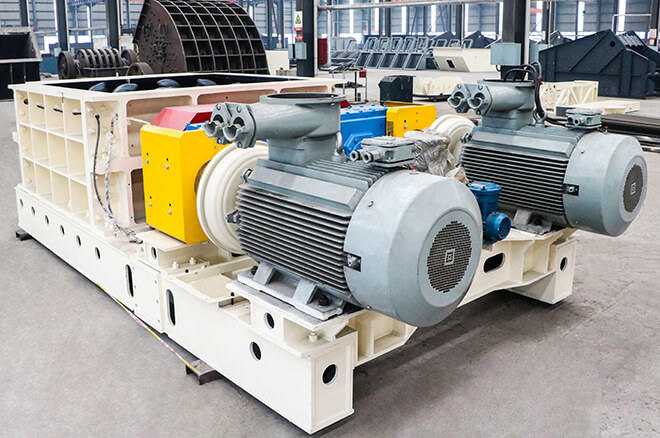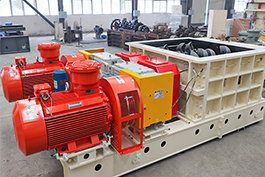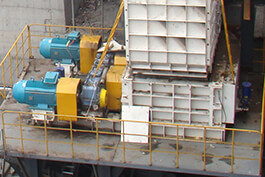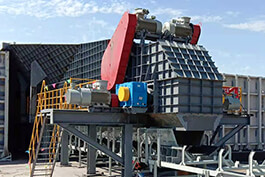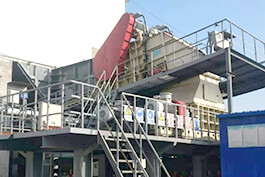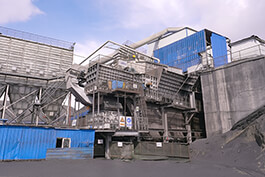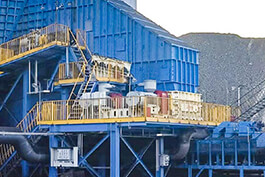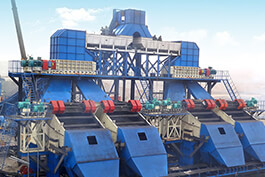Mineral sizer, as the most common crushing equipment with large processing capacity and large load capacity, is a kind of equipment that works continuously all the year round. Because most of its cases are in open-pit coal mines and the working environment is harsh, the requirements for equipment are extremely high, and the bearing of mineral sizer has extremely high requirements. In this context our company uses self-aligning roller bearing in mineral sizer.
The use of self-aligning roller bearing on mineral sizer requires attention to the following points:
I general requirements for maintaining mineral sizer frame materials
1) with low hardness and high wear resistance, although the wear resistance of high hardness materials is high, but such as using high hardness materials as cages, it will wear the rolling element, bring adverse effects on the rotating performance, and even produce "Holding phenomenon".
2) because the cage is subjected to repeated tensile and compressive stress, it requires a high fatigue strength: It has the necessary elasticity and toughness; withstand centrifugal force.
3) the cage is light in weight and uses low-density materials to make the friction loss of the bearing small and ease the impact of the rolling body side out of the load area.
4) plastic processing and cutting performance is good: There is enough rigidity and flexibility.
5) the coefficient of friction between the ring and the rolling element is small.
6) chemically stable, not easy to rust.
Additional requirements for cage materials
1) the surface is moistable, that is, it can attach or store lubricants:
2) good thermal conductivity, fast heat dissipation: Large heat capacity, heat resistance:
3) with a certain vibration absorption ability, not easy to resonate with other parts,
4) not easy to produce noise.
Special requirements for maintaining
mineral sizer frame materials
1) in the case of corrosion resistance, because the cage does not need extremely high hardness, austenitic stainless steel can be used, and 0cr18ni9 steel is the most used:
2) in high temperature situations, austenitic stainless steel with sufficient high temperature strength is also used:
3) when it is particularly necessary to improve the strength of the cage, low carbon steel plates can be used for carbonitriding surface treatment:
4) under the conditions of self-lubrication, graphite steel cages can be used, or porous materials that can store oil to make cages:
5) when working in a magnetic field, it is sometimes required that the material does not interfere with the external magnetic field and is not affected by the external magnetic field. Bearing temperature can generally be inferred according to the external temperature of the bearing seat. However, it is more accurate to measure the temperature of the bearing outer ring directly by using the oil hole. The bearing temperature gradually rises from the beginning of operation, and the temperature is usually stable after 1 to 2 hours. If the bearing is not properly installed, the temperature will rise sharply and abnormal high temperature will occur. Reasons such as too much lubricant, bearing clearance is too small, poor installation, sealing device friction is too large. In the case of high-speed rotation, the choice of bearing structure and lubrication method is also the reason.
The rotation of the spindle bearing is checked with a stethoscope, and there are strong metal noise, abnormal sound, irregular sound, etc., indicating that the abnormal causes are poor lubrication, poor accuracy of the shaft or bearing seat, bearing damage, foreign body intrusion, etc.
1. Tile surface corrosion: Spectral analysis found that the concentration of non-ferrous elements was abnormal: There were many sub-micron wear particles of non-ferrous metal components in the ferrography: Lubricating oil moisture exceeded the standard and acid value exceeded the standard.
2. Journal surface strain: There are iron cutting wear particles or black oxide particles in the ferrography, and there is tempering color on the metal surface.
3. Journal surface corrosion: Spectral analysis found that the concentration of iron was abnormal, there were many submicron particles of iron composition in the ferrography, and the lubricant water exceeded the standard or the acid value exceeded the standard.
4. Surface strain: There are cutting abrasive particles found in the ferrography, and the abrasive particles are non-ferrous metals.
5. Tile back fretting wear: Spectral analysis found that the iron concentration was abnormal, there were many iron submicron wear particles in the ferrography, and the lubricating oil moisture and acid value were abnormal. Under the condition of liquid lubrication, the sliding surface is separated by lubricating oil without direct contact, which can greatly reduce friction loss and surface wear, and the oil film also has a certain vibration absorption ability.
Mineral sizer uses self-aligning roller bearing to withstand large radial loads as well as certain axial loads. The outer ring raceway of this kind of bearing is spherical, so it has aligning performance. When the shaft is bent or tilted by force, the relative inclination between the inner ring center line and the outer ring center line does not exceed 1° to 2.5°, the bearing can still work. The inner hole of the self-aligning roller bearing has two kinds: Cylindrical and conical. The taper of the inner hole is 1:12 or 1:30. In order to enhance the lubrication performance of the bearing, an annular oil groove and three uniform oil holes are machined on the bearing outer ring. Self-aligning roller bearing are suitable for bearing heavy loads and impact loads, and are widely used in metallurgy, rolling mill, mining, petroleum, paper making, cement, sugar pressing and other industries.



